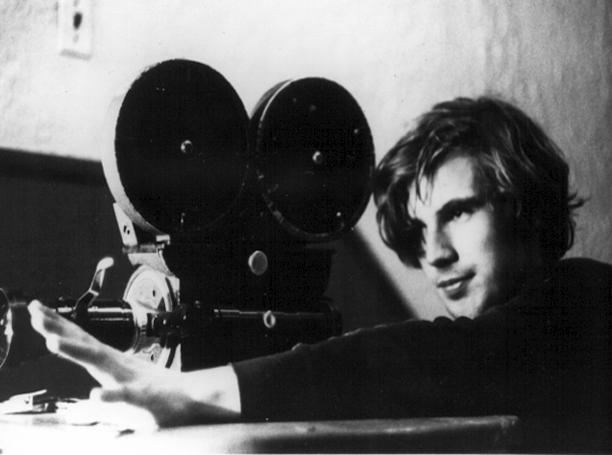
‘Wheeler Winston Dixon is a masterful film editor. His sensitivity to the movement within the frame and of the camera itself allows for fluidity in his editing that is exuberant and refreshing. He is skillful not only in manipulating the flow of images but the flow of ideas as well. He has assembled his images and juxtaposed them in such a way that their very ordinary nature suddenly becomes extraordinary. It is as though his films tap into our collective unconscious by exploring the surface realities that permeate our lives. Magical realms, pubescent fantasies, dreams of wish fulfillment, all assume strangely mythic proportions through Wheeler’s editing, so even the mundane world we accept so readily begins to look somehow dreamlike and unreal.’ — Bruce Rubin, Associate Curator of Film, Whitney Museum of American Art
“Though he’s best known today as a scholar (his book The Exploding Eye provides a who’s who of 1960s experimentalists), Dixon’s short films…are themselves visual catalogs of underground techniques: snarky Bruce Conner-ish montage, psychoactive Conrad/Sharits flicker effects, and Mekasian home-movie diaries. The distinctive Dixon kick comes from witty edits to far-out music. His loopy Americana remix Serial Metaphysics (1972) grooves to an increasingly trippy reverb and teen portrait The DC 5 Memorial Film (1969) prowls through Charles Ives, while the magnificent acid-structuralist London Clouds (1970) rocks to a Henri Pousseur electronic psych-out. The rich filmic collapse of personal memory into cultural history is summed up at the end of Quick Constant and Solid Instant (1969), a Fluxus performance set to a Gerard Malanga poetry reading. ‘It will take you a long time,’ intones Malanga, ‘to understand why I wrote poems for you.” — Ed Halter, The Village Voice
‘Wheeler Winston Dixon, the prolific author of books on François Truffaut, Jean-Luc Godard, American experimental cinema, and film theory, has also been making experimental films of his own for the past three decades. Dixon’s career stretches from the late 1960s to the current day, including early works like The DC Five Memorial Film (1969), which interweaves home movies of Dixon’s 1950s Connecticut childhood with footage shot in 1969 in New York City and at a farm upstate; Quick Constant and Solid Instant (1969), featuring a Fluxus group-performance piece and a poetry reading by Gerard Malanga; and Madagascar, or, Caroline Kennedy’s Sinful Life in London (1976), in which a fictional Caroline recovers from a hangover. Other notable early films include Serial Metaphysics (1972), an examination of the American lifestyle recut entirely from existing television advertisements, and What Can I Do? (1993), a rigorous, tender portrait of an elderly woman who holds dinner-party guests in thrall to her difficult family life.’ — Joshua Siegel, The Museum of Modern Art
____
Stills


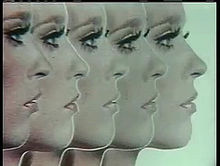



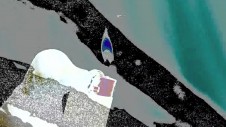











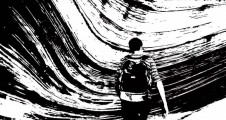

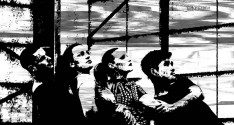

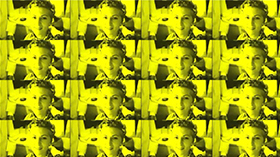

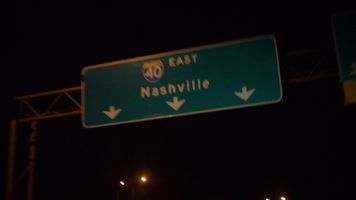
____
Further
Wheeler Winston Dixon Official Website
WWD @ IMDb
WWD @ Vimeo
Wheeler Winston Dixon’s books
WWD @ Senses of Cinema
WWD @ Experimental Cinema
Wheeler Winston Dixon Tolls the Death of the Moguls
WHEELER WINSTON DIXON ON THE LOST ART OF BLACK & WHITE
Crowhurst and Bonemagic – Dedicated To Wheeler Winston Dixon
Audio: WHEELER WINSTON DIXON: THE FILMS OF TERENCE FISHER
SOME NOTES ON STREAMING, BY WHEELER WINSTON DIXON
Visions of the Apocalypse: Spectacles of Destruction in American Cinema
Audio: The Spy Whom We Loved: The Enduring Appeal of James Bond
____
Extras
Frame By Frame: Movie Trailers
Frame By Frame: Film Criticism
Frame By Frame: Camera Moves
Frame by Frame: Minorities in American Cinema
_____
Critic
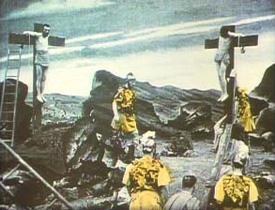
There can be no doubt that the digitisation of the moving image has radically and irrevocably altered the phenomenon which we call the cinema, and that the characteristics of this transformation leave open an entirely new field of visual figuration. For those who live and work in the post-filmic era – i.e., those who have come to consciousness in the past twenty years – the digital world is not only an accomplished fact, but also the dominant medium of visual discourse. Many of my students remark that the liberation of the moving image from the tyranny of the “imperfect” medium of film is a technical shift that is not only inevitable, but also desirable.
For younger viewers, the scratch-free, grain-free, glossily perfect contours of the digital image hold a pristine allure that the relative roughness of the filmic image lacks. Indeed, by doing away with film, many of my students persuasively argue that we are witnessing the next step in what will be a continual evolution of moving image recording, which, in turn, will be followed by newer mediums of image capture now unknown to us. For others, those of my age, the filmic medium is a separate and sacrosanct domain, and the “coldness” of the digital image, stripped of any of the inherent qualities of light, plastics and coloured dyes, betrays a lack of emotion, a disconnect from the real in the classical Bazinian sense. DVDs are easy to use and cheap to produce, but can’t afford the visual depth and resonance of a projected 35mm filmic image. And, it seems to me, both arguments have valid points and are equally worthy of serious consideration. (cont.)
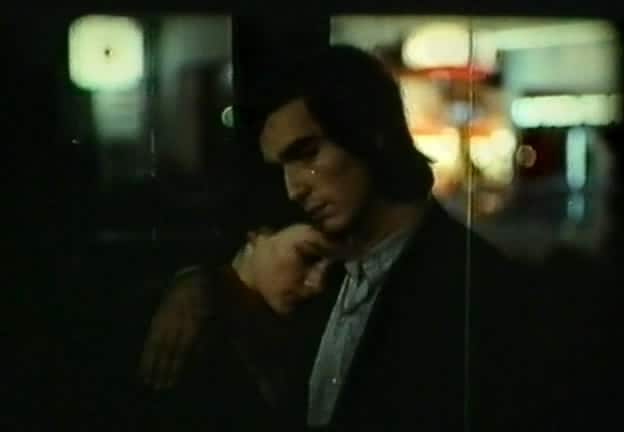
Four Nights of a Dreamer is, for me, one of the most sublime films by Robert Bresson, along with his much-maligned French Resistance drama Les Dames du Bois de Boulogne, with a script by Bresson from Denis Diderot’s Jacques le fataliste and incomparably witty dialogue by Jean Cocteau. But while Les Dames is readily available on DVD, Four Nights is not. I saw it when it first opened in New York at the Vivian Beaumont Theater on a gorgeous 35mm print, and was stunned by the film’s sensuous beauty, and its rendition of Paris at night as a city of romance and artistic endeavor, in which the young – giving their lives to love and art – were the film’s undoubted protagonists. (cont.)
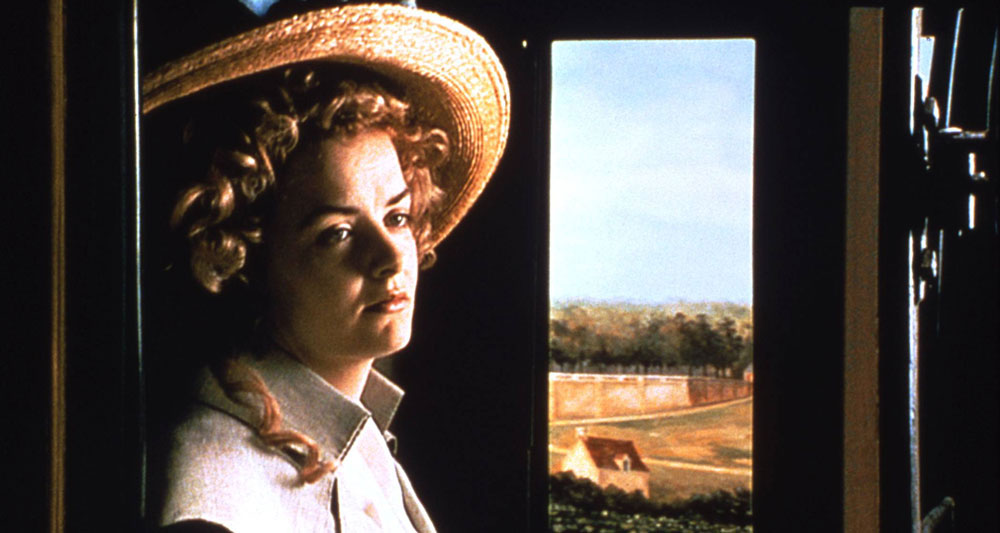
For most of his long career, Éric Rohmer created a series of ‘moral investigations’ that were resolutely spare and enigmatic in their construction, dealing with matters of the heart, personal intrigues and disappointments, and the vicissitudes of human existence. He began his career shooting on 16mm film, and then as his commercial clout increased, switched to 35mm (with exceptions such as his gorgeous and mostly improvised 1986 feature The Green Ray, shot on 16mm film to keep costs down), but no matter what format Rohmer used, his films remain rooted in the real world, devoid of both spectacle and special effects.
The Lady and The Duke, however, represents a dual departure in both style and structure from Rohmer’s previous work. For the first time, “aside from La Cambrure, a 17-minute film presented at Cannes in 1999”, Rohmer used digital cameras rather traditional 35mm film to capture his chosen images. In addition, Rohmer made extensive use of ‘blue screen’ technology to create non-existent sets through the use of digital backdrops that are, by design, completely stylised and artificial. As Frédéric Bonnaud noted shortly after the film’s release in 2001, “the results are spectacular, recalling early cinema projection techniques and 19th-century magic lantern presentations, as well as the panoramic views of Venetian painting, the canvases of painters like Hubert Robert, and children’s slide shows and shadow play, with vague silhouettes seemingly floating against exterior backdrops.” (cont.)
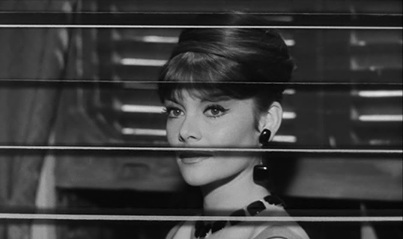
Many years ago, in 1969, when I was working as a writer for Life magazine under editor Thomas Thompson, one of the highlights of my working week came on Monday, when the screening schedule of newly released films would be distributed throughout the office, and we’d all post the list on our respective bulletin boards. In that resolutely pre-digital era, every new release was screened in its original 35mm format at one of the many excellent facilities that existed in Manhattan at the time, and being absolutely omnivorous about film, I would make it a point to attend every single screening, every single day, of absolutely every film that was being released.
And thus it was one day that I found myself in a screening room at Preview Theater, located at 1600 Broadway, sitting in a screening room watching Alain Robbe-Grillet’s debut feature, L’Immortelle. The film absolutely stunned me with its originality and brilliance in every aspect, from its enigmatic screenplay, to the dreamy mise-en-scène. But unlike the much better known Last Year at Marienbad, which Robbe-Grillet scripted but did not direct — Alain Resnais did the honors on that one — for some reason, L’Immortelle never caught on in the states, even on the art house circuit. (cont.)
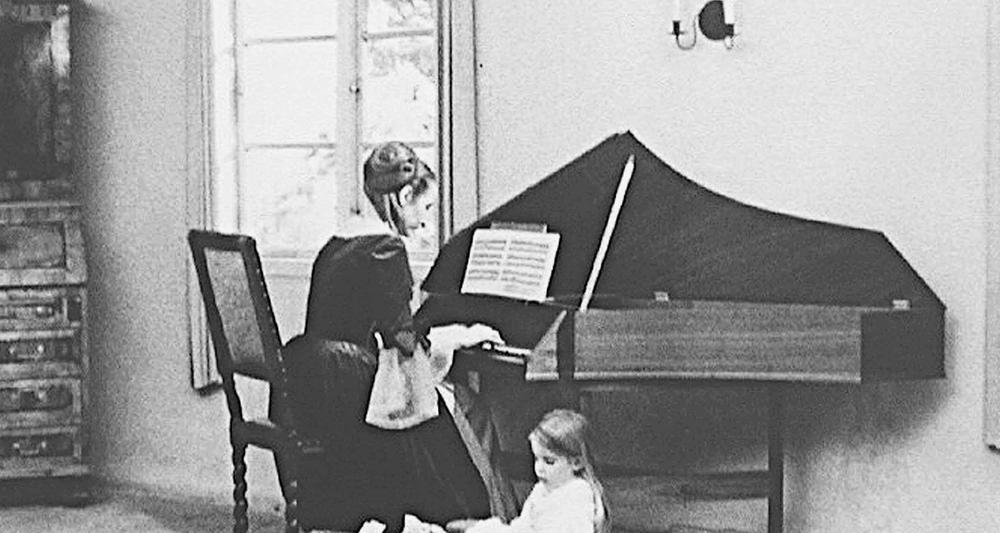
The Chronicle of Anna Magdalena Bach (1968) by Jean-Marie Straub and Danièle Huillet is a film almost unlike any other. Starring classical harpsichordist Gustav Leonhardt as Bach, the film tracks the composer through his everyday life as a church organist and composer for hire, and is composed of only about 80 shots for the entire film. Filmed on many of the actual locations of Bach’s life, using period musical instruments, real musicians rather than actors pretending to be musicians, and photographed in 35mm using direct sync-sound recording, the film is truly a one of a kind project. Though Straub is often credited as the sole director of the film, it’s clear to me that it was co-directed by both Straub and Huillet, as a documentary on the making of the film demonstrates. (cont.)
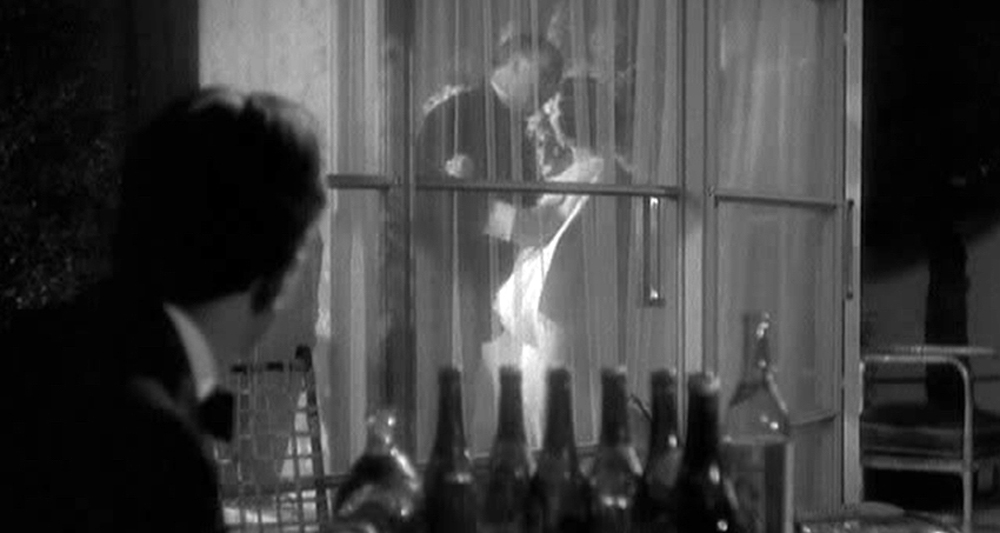
When the cinema was first invented, women were responsible for some of the major breakthroughs in the medium, and often advanced to the director’s chair. Such early figures as Alice Guy, Ida May Park, Cleo Madison, and Lois Weber all made films during the silent era, and the impact of their work was considerable. Alice Guy directed what is often considered the first film with a plot, La Fée aux choux (The Cabbage Patch Fairy) in 1896, and then went on to direct nearly 1,000 films, of which some 350 survive, as well as developing an early sync-sound process, an equally pioneering color process, and directing some of the first multi-reel films. Lois Weber was one of the most successful and highly paid directors working at Universal during the teens and early 1920s, with such controversial films as Hypocrites (1915), Where Are My Children? (1916) and The Blot (1920).
It was during this period that Dorothy Arzner broke into the film industry, starting out as a stenographer in 1919 at Paramount Studios, rapidly moving up as a screenwriter, and later as a film editor on Fred Niblo’s 1922 version of Blood and Sand, starring Rudolph Valentino. As an editor, screenwriter and script doctor, Arzner was much in demand, but Paramount refused to give her the chance to direct a feature film. Incensed, Arzner finally threatened to move to Columbia Pictures, where Columbia’s studio head, Harry Cohn, was actively courting her as a director and scenarist. Dismayed at the prospect of losing her services altogether, Paramount relented. Arzner soon became one of the studio’s most prolific directors, directing such box office hits as Fashions for Women (1927), Ten Modern Commandments (1927), Get Your Man (1927) and The Wild Party (1929), her first sound film, starring the “It” girl, Clara Bow. (cont.)
Many more of Wheeler Winston Dion’s essays and reviews here
____
Interview
from Senses of Cinema
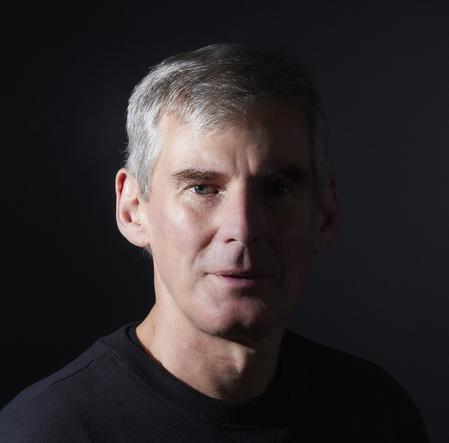
Gwendolyn Foster: Let’s start with your obsession with movies. When did you first realize that you were interested in movies and the moving picture art form?
Wheeler Winston Dixon: I was born March 12, 1950 in New Brunswick, New Jersey. I first realized that I wanted to make movies when I was about four years old. I recall sitting in a crib and looking out the window at a church in the distance. There was a cross on top of the cathedral, and I wanted to capture that image and keep it with me always. That was the first image that I remember, and I guess that was when I decided that I wanted to be a filmmaker.
GF: Did your mom let you play with a still camera? Did you start playing with an 8mm movie camera?
WWD: She gave me a small still camera and I took pictures of my classmates in kindergarten in black and white; this was about 1956. About that same time, when I was about six years old, I got a standard 8mm camera, and started making home movies in earnest, particularly of our cross country trip in 1960, when I shot about three hours of 8mm film, all lost now, and some animated cartoons.
GF: I remember seeing some of your early animation that you made when you were a little kid. Want to talk about them a little bit?
WWD: I first started making animated cartoons in 1956 or ’57, but then I found I couldn’t draw. So that was pretty much the end of the animated cartoons. But I made a bunch of them. One was called Skate Crazy, which was made in 1958. I drew them a frame at a time with crayons and photographed them with this camera that was set up with a homemade animation stand that was built out of a Dewar’s whiskey box. Really a pretty primitive affair. I’d get a friend over to help me color the drawings, because there really were thousands of them to do for a very simple four minute cartoon. People thought that they were more or less like the Tex Avery cartoons from MGM in the 1940s, which I was heavily influenced by. Television started in New York in the early fifties, and I began watching television voraciously; the first thing they ran were old cartoons, and old British movies, because the Hollywood studios were scared of TV at that point, and didn’t want to sell them any movies. So I grew up on Ealing comedies and British “quota quickies,” plus Monogram, PRC, and Republic films, which were sold to TV early on. When I was about 10, somebody gave me a 16mm print of Strange Illusion (1945) a really interesting Edgar G. Ulmer film, and I learned how to thread it in a 16mm projector that someone loaned me for a weekend. I watched the film that one weekend something like 20 times. I just memorized it. Later, I was involved in film societies, and began traveling into New York City to see films, and meet some experimental filmmakers.
GF: Tell me a bit more about these film societies; who was there, what you saw, and the like. With videocassettes, they’re pretty much defunct. But this was all 16mm film projection.
WWD: In New Brunswick, at the Public Library, they screened classic films in 16mm format every Saturday or Friday night, for free. That was when I first saw Len Lye’s films, the Marx Brothers, Maya Deren, Man Ray, Marcel Duchamp, René Clair. I saw right away that there were two models. There was the Hollywood model, and there was the independent model. The independent model attracted me more, because you didn’t have to deal with all of the sets and the casts and the crew and the money and the overhead. And independent cinema at that time was very cheap to make, so it was a possible alternative. That’s when I got involved in the Co-op, when it was still a pretty fluid scene. When I was about 14, I bought my first Bolex 16mm camera, and from that point on, I began to make 16mm films with optical sound tracks and never looked back.
GF: Did you have any friends that you would show these films and maybe make films too?
WWD: My friends at this point, even when I was 14, were mostly graduate students at Rutgers University. Robert Atwan, Donald McQuade, Mark Gibbons, Dick Arthur, Robert Pingree; these were all people who were passionate about film, and supported my work. These were people who were basically involved in creating stuff, creating art, creating literature. So by the time I was 14, I was already involved with the graduate program at Rutgers University, hanging around a group of graduate students, going to their parties, and dividing my time between that and New York City. When I found the people at Rutgers University, I just walked in on the film screening one day. It was open to the public. I started talking to the projectionist. I said to myself, “This is it. These are the people. I’m talking to them. We’re on the same level here.” And the next thing you know, they drew me into their circle really fast.
GF: Let’s talk about some of the stuff you were interested in at the time.
WWD: Well, I was obsessed with comic books, pop culture, television shows like The Untouchables. American International films like I was a Teenage Werewolf (Gene Fowler Jr, 1957) and Invasion of the Saucer Men (Edward L. Cahn, 1957). I also really liked a show called Open End, hosted by David Susskind. And at that point, it really was open-ended! It would start at about 10 o’clock at night and run until everyone was exhausted, depending on the topic.
New York television in the ’50s and ’60s was sort of an extension of your living room. It was another living room somewhere, with a camera televising the discussion. Soupy Sales did a live hour-long show every day, which I adored. There were no glitzy sets, no replay graphics, just some people in a room. It was very amateurish, very “from our home to your home.” It was mostly live. Now, in 2003, we’re going back to live TV, but it’s live TV intercut with video clips and other image sources, and it loses its liveness and its immediacy. The interesting thing about ’50s live television was that it was raw. When videotape first came in, you couldn’t edit it, it had to be a straight run; we’re talking the very early ’50s here. So, it was all live and uninterrupted.
So I saw a lot of films, and knew it was my life. From the time I was four or five, I was covering my walls with stills from movies. I knew a lot about movies. I could rattle off statistics. There was no “standard” film history out there. There were no film historians, there were no cult movies. It was really something I was doing on my own.
GF: A lot of these films are really short. How would you describe them? Were they assemblage type of films? Did you use appropriated images or shoot them yourself? Were they structuralist? What kind of films were they?
WWD: Well, Gee Whiz (1966) was shot in color in 8mm, intercut with shots of planes blowing up and Michael Landon turning into a werewolf in I Was A Teenage Werewolf. Then I blew it up to 16mm and released it, without a track. The second silent film, 60 Seconds of the City (1966), was basically just a sort of Bridges-Go-Round (based on Shirley Clarke’s 1958 film of that title) approach to New York City; footage of New York at the time.
Jon (1966) was a 45-minute film starring a guy named Chris Saia, and that was made in 1966. I shot that in Regular 8mm sound, with a Fairchild 8mm sound camera. This was sync sound, the standard 8mm Fairchild camera, and was then considered the technological marvel of the age. It had a magnetic stripe on the side of the film, and took 100′ loads of 8mm film. The sound quality was terrible, but the camera was lightweight, and completely portable. The film was about a 16-year-old kid and his problems in high school; highly autobiographical.
GF: It strikes me that it wasn’t hard to get in on a scene. Was that partially because you were handy with technical equipment, or was it just a really open scene?
WWD: It was an open scene. You could walk in the door, and if you were perceived as being useful, you were allowed to stay. That’s basically it.
GF: Who were some of the other filmmakers hanging around at this time?
WWD: Shirley Clarke; I remember her being very kind to me. Gerard Malanga and I fell in very rapidly. Bob Cowan. Warren Sonbert. Jerry Hiler. Nick Dorsky. Jud Yalkut. John Dowd, a very fine collage artist in the school of Ray Johnson, was working at the Cooperative. Gordon Ball, also a filmmaker, was working at the Co-op, as well. Marie Menken worked at the Time/Life Building. When I was working at the Time/Life Building, Marie Menken would come up and we would sit and talk. Ernie Gehr was working at the Cooperative. He began making films in Super-8. I later met Michael Snow, Hollis Frampton and Joyce Wieland.
I remember running some early reels for my film The Visionaries (1969) at Joyce Wieland and Michael Snow’s loft in New York. Filmmakers would get together and have chamber screenings and run each other’s movies. I mean, basically you had a projector, and you had a wall. We’d all sit around and run each other’s films.
GF: Experimental film now seems so incredibly competitive and so hierarchical. I can never put my finger on what kind of a scene it really was then. Did you all seem like kids running your films, having a good time? Or was it already becoming hierarchical?
WWD: The film scene, when I became aware of it in New York, was very non-hierarchical. Jonas Mekas was publishing his column in The Village Voice called “Movie Journal” saying, in essence, that film should be open to all. There was a long period of the 60s, from ’60 through ’68, where valuations were not made; everyone was considered to be a creative artist with something to say. All styles and methodologies were encouraged; nothing was censored, and there were no ‘schools’ of thought or practice.
One of the things that I’ve done in my book The Exploding Eye is to talk about the people who have been dropped by the wayside, people who were superb filmmakers but have somehow dropped off the radar. Rudy Albers, Rudy Burckhardt, Norman Berg, a lot of great people, some of whom have resurfaced. Yayoi Kusama, who came back after years and years of wandering in the wilderness. Valie Export. Carolee Schneeman. She was pretty notorious during that time. Charlotte Moorman, Steve Anson, Takahiko Iimura, people like that.
But then in 1967, Michael Snow made Wavelength. People were deeply impressed by the film, and saw it as the first film which really played with the structural qualities of the motion picture image. It’s a very sophisticated and accomplished work. There’s no getting around it. But Wavelength suddenly became a model for all other filmmaking. Structuralism took over as a school and dominated independent production for all of the 1970s. Unfortunately, that’s what really killed the ’60s film scene more than anything else.
The critical establishment embraced formalism with a frenzy, and all other styles of filmmaking were thrown out. This marginalized a number of enormously valuable filmmakers, many of whom simply left the scene. Jerome Hiler, for example, never even exhibited his films; he had his first exhibition in 1995. He was making films from 1964 on, but he never screened them, or made prints of them. So, until 1968 it was an open scene. Suddenly it became a very closed scene. The minute the Filmmakers Cinematheque in New York City closed down, that was the end of it. It turned into Anthology Film Archives, at the Public Shakespeare Theatre, running a closed set of films called “The Essential Cinema,” and suddenly, except for a few places like UP Screen, Millennium, and The Collective for Living Cinema, there was no place to show your films. So that put a real stop to the whole ’60s film scene in Manhattan.
In the sixties we made films about people, about their lives, their concerns, their loves and passions. The seventies were very sleek and empty, more concerned with structure, form, and a certain kind of ascetic rigorousness. I didn’t really care for it; I’m a romantic. It was also the height of disco, which was omnipresent in New York City in the early ’70s, and which, of course, was absolutely brain dead. WKTU, “Disco 92,” played disco around the clock; it was awful. Most people just followed the crowd to Studio 54, but that struck me as really dull and elitist. Everything I was against. But then CBGB’s started putting on The Ramones, Blondie, Television, a lot of interesting New Wave bands, and that was something of a haven. But there was definitely a sense of paradise lost; it was just too good to last.
_____________
17 of Wheeler Winston Dixon’s 53 films
_____________
Bits & Pieces (1969)
‘Late one night in the Time/Life Building in 1969, the television speaks.’ — WWD
_____________
Children of Light (1969)
‘On The 4th of July in upstate New York, 1969, at a small farm I owned at the time, local children and their parents play with sparklers in the evening – a very simple film.’ — WWD
Excerpt
______________
Quick Constant and Solid Instant (1969)
‘The rich filmic collapse of personal memory into cultural history is summed up at the end of Quick Constant and Solid Instant (1969), a Fluxus performance set to a Gerard Malanga poetry reading. ‘It will take you a long time,’ intones Malanga, ‘to understand why I wrote poems for you.’’ — Ed Halter, The Village Voice
______________
London Clouds (1970)
‘No matter where you arrive in legend, you find yourself at the point of initial departure.” — Wheeler Winston Dixon. ‘His loopy Americana remix Serial Metaphysics (1972) grooves to an increasingly trippy reverb and teen portrait The DC 5 Memorial Film (1969) prowls through Charles Ives, while the magnificent acid-structuralist London Clouds (1970) rocks to a Henri Pousseur electronic psych-out.’ — Ed Halter, The Village Voice
______________
Stargrove (1974)
‘A brief film from 1974 – really an experiment – which uses eight layers of superimposition to create a work of such density that no one image dominates for more than a few seconds.’ — WWD
_________
Gaze (1974)
‘In 1971, I drew a large mural on the wall of my studio – involving painting, tracing, and photo-silkscreens – which was located on the top floor of an abandoned building in New Brunswick, NJ. In 1974, the building was demolished. One morning, just before the demolition crew moved in, I set up my Bolex and shot 100′ of the mural before it was completely destroyed, and here it is. The film is silent; the light is all natural; the film is Ektachrome Reversal 7241, a really beautiful daylight film stock – 2.5 minutes of contemplation.’ — WWD
______________
Numen Lumen (1974)
‘Meditations on light and a window fan for Jerry Hiler and Nick Dorsky.’ — WWD
______________
Madagascar, or, Caroline Kennedy’s Sinful Life in London (1976)
‘This is a short film based on an incident I read in the National Enquirer, a really innocuous item about Caroline partying late at night with Erskine Guinness, the heir to the Guinness Brewery fortune. I imagined Caroline waking up the next morning, recovering from the excesses of the night before, and trying to mix some orange juice in a blender, but being so out of it that she used three cans of gin instead of water to make the concentrate into OJ. It’s an odd film.’ — WWD
_____________
Distance (1987)
‘With Richard Lea, Jane Back-Patton. Memories of a long-ago summer, London 1968; morning tea and departures. Produced with the assistance of the New Arts Lab, London.’ — WWD
Excerpt
_________
Slap (2015)
‘Made entirely from found materials, this film documents the moment before impact, the slap itself, and then recapitulates the moment leading up to the slap – three times. This video was created using footage and soundtracks in the Public Domain, or released as CC0 Public Domain materials, and is made entirely from recycled, repurposed and refashioned images and sounds.’ — WWD
____________
A Typical Day (2016)
‘Observe yourself as you go through a typical day. Stuff happens to you. As it does, you immediately judge it and label it. Dozens of times. Hundreds of times. So often that you no longer recognize that you’re doing it.’ — Srikumar Rao
_____________
The Ninth Circle (2017)
‘At the bottom of the well Dante finds himself on a huge frozen lake. This is Cocytus, the Ninth Circle, the fourth and the last great water of Hell. Here, frozen in the ice, are punished sinners guilty of treachery against those to whom they were bound by special ties. The ice is divided into four concentric rings marked only by different positions of the damned within the ice. This is Dante’s symbolic equivalent of the final guilt. The treacheries of these souls were denials of love and of all human warmth. Only the remorseless dead center of the ice will serve to express their natures . . . As they denied all human ties, so are they bound only by the unyielding ice.’ — John Ciardi
__________
Sleep (2017)
‘This video was created using footage and soundtracks in the Public Domain, or released as CC0 Public Domain materials, and is made entirely from recycled, repurposed and refashioned images and sounds.’ — WWD
____________
Catastrophe Series (2018)
‘Here’s a series of videos dealing with catastrophic events, stylized and accelerated to about 1 minute or so each. “The nature of catastrophe is, after all, reasonably unvarying in the way it ruins, destroys, wounds and devastates. But if something can be learned from the event – not least something as profound as the theory of plate tectonics – then it somehow puts the ruination into a much more positive light.’ — Simon Winchester
______________
Access Granted / Access Denied (2018)
‘New technologies and approaches are merging the physical, digital, and biological worlds in ways that will fundamentally transform humankind. The extent to which that transformation is positive will depend on how we navigate the risks and opportunities that arise along the way.’ — Klaus Schwab
______________
Prison State (2018)
‘In October 2013, the incarceration rate of the United States of America was the highest in the world, at 716 per 100,000 of the national population. While the United States represents about 4.4 percent of the world’s population, it houses around 22 percent of the world’s prisoners.’ -– Wikipedia
_____________
The Language of Dreams (2019)
‘Talking about dreams is like talking about movies, since the cinema uses the language of dreams; years can pass in a second, and you can hop from one place to another. It’s a language made of images. And in real cinema, every object and every light means something, as in a dream.’ -– Federico Fellini
*
p.s. Hey. ** JM, Hi. Yes, actually, I think Deleuze becomes more relevant every day. I’m happy the blog is bolstering you, and I’m sorry to hear about the thin, sad times. Things are rough and weird at the moment on my end. Long story. I’m fine, but some work I’m doing is in limbo and endangered, and someone both close to me and in involved in the work appears to be dying. What a world. Take care, pal. ** Steve Erickson, Yeah, I think you’re probably pretty safe. Look forward to the review. Everyone, Steve Erickson has reviewed Torche’s forthcoming album ‘Admission’ here. ** David Ehrenstein, Hi. I don’t know that I agree with everything Deleuze writes in this book, but I find all of it inspiring and exciting, and I haven’t thought he was wrong so far. I’ve read a little Oudart, but I need to read more. ** KK, Hi. I’m in-between writing right now, in-between writing for the film and TV projects, but it’s too short a break to get back into my novel, which, yes, I started but haven’t worked on in a focused way for a few years. I do want to finish it, hopefully starting ASAP. I do seem to be very driven, writing- and work-wise. But I think it’s just a happy accident of my biology or something. That’s very nice of Joseph Grantham. I like his work. Wow, cool story of how you got ‘Period’. That’s very cool to hear. Happy that you’re writing, and good luck with the waiting on the venue responses. I hope they’re diligent. You enjoy your enjoy early weekend big time too! ** DJWaKeasaton, Ha. Uh, no, I hated seafood with all my heart and soul even when I last ate meat/fish as young teen. I’m totally cool when eating with people who are downing meat and fish and stuff across a table, but when they’re eating oysters or clams or lobster or that kind of thing, I feel ill. You sound like a totally revved song constructor, yes! I suppose you’ve read about the horror movie Danzig directed that’s supposed to be the most embarrassingly terrible movie ever made or something. ‘The Room’ of its generation, etc. If it ends up on youtube, I’m there with finger on the FF. There are awesome new films, but you have to really hunt them down, and I’m just guessing that the hunt is especially hard in Florida, but maybe that’s just northern naivete. Oh, twink assassin, back cracking … I’m so there. ** _Black_Acrylic, Hi. Cool, yeah, ‘The Conformist’ is amazing, right? I’m happy the blog helped lead you to it. Yes, what do I know, but pushing for a change in your treatment seems like a no brainer? There’s always the possibility that consultants get complacent and unambitious and too accustomed to the easy answer of staying the course. Yeah, Ben, I encourage you to press for what the possibilities are and to urge them to up their game. ** Misanthrope, That’s some rain, it would seem, if your poetry is at all accurate. Our fireworks are on the 14th. They’re already turning Concorde into a giant VIP area for the parade and all of that. I’m getting sympathy sweat and lethargy just reading about your temperature. Hang tight. Or loose. ** liquoredgoat, Hey, D! Thanks about ‘Long Gone’. I’ve never read Ottessa Moshfegh as far as I know. Huh. I’ll try to hunt down that short fiction collection. Thanks, buddy. I hope things are thoroughly good and sharp with you. ** Okay. I only knew Wheeler Winston Dixon’s very fine film writing until Mr. E mentioned that there was a screening of his films in LA, whereupon I went on a discovery mission re: his films, and I liked them very much, so I made a post, and that’s the story. Check out what he does if you don’t know it, or, obviously, even if you already do. Excellent stuff. See you tomorrow.




 Now available in North America
Now available in North America 
Hi d. Slightly drunken and happy condolences. Look after the people who might be leaving. I hope the work finds its way through the mess that is lifez
J
So Great to se this Wheeler Day!
Very sorry to hear about a colleague dying. As Noel Coward said “If your friends only last through lunch. . .”
My sale is still going on. It’s crunch time. All in the L.A. area should contact me. STAT!
I enjoyed these WWD films, Quick Constant and Solid Instant and London Clouds especially. Not wanting to make a facile comparison but they do remind me of things projected onto the walls of nightclubs, like Bugged Out in Liverpool would sometimes have interesting visuals that would enhance the psychedelic experience.
I’m familiar with Dixon’s writing but didn’t know he’s also a filmmaker!
Here’s my article on the Quad’s June series of ’70s and ’80s queer German cinema: https://read.kinoscope.org/2019/07/04/queer-kino-1970s-and-80s-gay-german-arthouse-cinema/
Yesterday, I saw DARE TO STOP US, a film about a young woman who starts working for Koji Wakamatsu’s production company in 1969. It follows her for the next few years, working in an environment that’s a sausage fest where women are expected to cook and take off their clothes in Wakamatsu’s films while men write and direct them. I was expecting a story of empowerment through cinema and sex-positivity, but instead the character remains passive and laconic and things turn out fairly grimly for her. But as much as this is trying to be a feminist critique of the New Left and the filmmaking associated with it, its first two thirds seem far more fascinated with Wakamatsu (played so broadly as a macho poseur that he turns into a caricature) than its supposed protagonist.
Hey Dennis – I didn’t know Winston Wheeler Dixon at all, so this post was a particular treat and revelation. Really dug ‘Stargrove,’ ‘Numen Lumen,’ and ‘Caroline Kennedy’ films and plan to spend time with the more recent work this weekend.
Band played first gig in 9 months last night and it went well, though the venue was super odd — it’s a wide and shallow space where most of the audience tends to huddle on the far sides of the stage while the band faces the few souls sitting at the bar. The entire space is fully lit too, adding to the awkward vibe. I’m sure there’s a good strategy as a performer for addressing that, but couldn’t figure it out in the moment.
Do you happen to be familiar with Alan Garner’s 1970s novel ‘Red Shift’? Mark Fisher raves about it in his book on the weird and eerie. It’s new to me, though NYRB reissued it.
I’m really sorry to hear about your friend and what sounds like dire news. That’s awful. Hope somehow it’s not as dire as it now appears.
This is really beautiful and powerful work. “Prison State” is particularly appropriate right after the holiday yesterday.
Somehow I managed to space out on fireworks yesterday, and was mostly cooking and cleaning. And reading.
Sorry to hear about the weirdness on your end, Dennis…
Bill
Dennis, I like that Dixon had his hands in so many things, so to speak. I’m impressed and just a little jelly. 😀
It was the type of rain that you can hear indoors, not beating on the roof but on the ground outside. Really. I heard it-yes, even with my shit hearing, I heard it- and jumped up and looked out, and the drains from the gutters were gushing like rapids. Something to behold. Straight down too, no wind. I like rains like that. But it was over quick and then just rained steadily throughout the fireworks.
Fortunately, I’m indoors most of the day, especially during the week. The courtyard at work has huge trees that give good shade. There’s usually enough of a breeze to help too.
You know, when you’re sitting in the A/C all day, it actually feels kind of nice when you first walk out into the stifling heat…for about 30 seconds. And then you’re like, “Fuck this shit,” and run back in. 😛
Picking Kayla up from the airport tomorrow. Little hussy went on a cruise with a friend of hers. Where’s she getting all this money? I told my mom she must be selling some good dope. Actually, what I think she’s doing is what her uncle does (and his grandmother before him): saving that shit up for trips. 😀
Found what seems to be a nice place in London near Hyde Park. 200 pounds a night for a week. It’s got 3 bedrooms, sleeps 6, there are 5 of us kicking in. Little patio too and close to the Paddington Tube station. An area called Little Venice. The dude who’s letting it seems really nice so far. A guy named Justin.
Now to get LPS his fucking passport. Get this. Dude got his photo. Great. I filled out all his paperwork, made all the copies, wrote the checks, and set up his appointment today at 11:45 a.m. What did he do? He didn’t go. Ordered Domino’s instead. It’s that whole thing of “I do things on my time, not yours, and I’m a show ye!” Fuck it. He wants another appointment, he’s got to set it up himself.
Read the Halpern article. Nice. Very nice.
Yet another timely introduction made for me on this blog, thanks a million. Look forward to checking this out more. And I’m glad you enjoyed my video!
I saw Peter Whitehead’s “The Fall.” Very impressed by verite work on Columbia student protestors and situationist street performers–frantic trippy sequences were a mixed bag but the apartment set was fun and inspirational, clearly modeled off Godard’s work at the time and wit other local touches like a waste basket made to look like a Campbell’s soup can. One shot is downright prophetic: man looks in bathroom mirror with face reflected inside frame of Time magazine Man of the Year Issue. I wonder about the history of this gag: it’s also used in Big Lebowski and became real one year when the Person of the Year was You as reflected in glossy paper on the cover.
My folks are visiting me and we’re having a good time. I don’t have room for them to stay at my place so they’re staying at a beach hotel that’s a comfortable distance away lol. My mom is a very wise woman and has been a speech therapist for over 40 years. She suggested an analogy to me that’s helping a lot with pragmatic communication, i.e. working around gaps in my Hebrew to connect with people and get across what I’d like to say.
The idea is to imagine that instead of being a young Hebrew language learner I’m an old native Hebrew speaker who’s had a stroke and now has to talk around even simple words because of gaps in memory recall. This thought exercise takes out a lot of frustration and gets me working with the words I do have rather than fishing around for other words.
I’m very taken by the last stanza of your poem “Idol is Available.” It looks to me like it’s just a few tweaks away from the very hard to imitate cadence of Emily Dickinson (adjusting line breaks and punctuation and adding dashes):
his skinny arm across
my chest, his bad breath on
my mind, I know every-
thing about my idol and
he’s nothing like a god
I’ve been having a fruitful time with various kinds of writing including screenwriting and preparations for a short found footage video.
I hope the weather’s cooled down for you, wish you the best of luck, and wish your friend/collaborator a speedy recovery. Btw, have you read Chris Ware’s Building Stories? My living situation makes me think about it all the time.
I got a huge kick out of this Israeli beer commercial that’s gone viral and thought you and other folks here might too. It’s a lament of how the real men have disappeared from Tel Aviv and been replaced by hipsters:
https://www.youtube.com/watch?v=TYp6IQXdMwI
Hey Dennis – many thanks for the kind words! Much appreciated! WWD